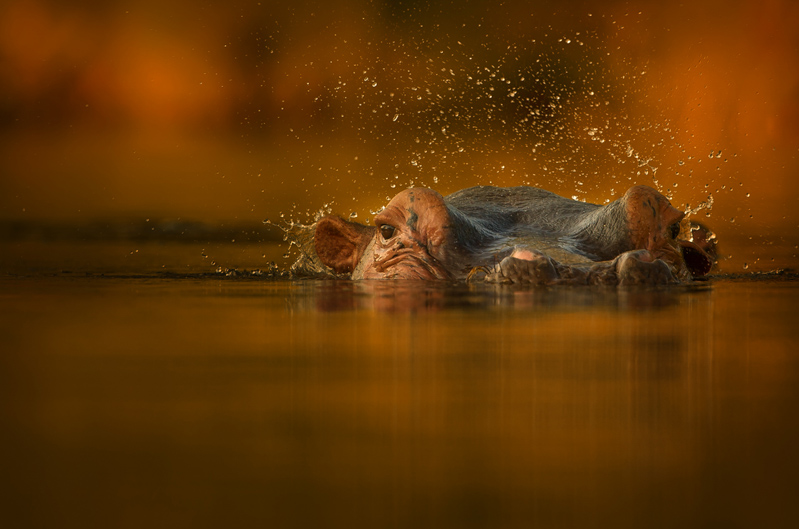Tips for Great Safari Photos in Africa

Going on a safari in Africa is a fantastic and unforgettable experience. Getting some beautiful photographs is an added bonus! There are a number of elements that would afford some magical wildlife photographs, and I have listed a few below that could be considered before your next safari.


Destination
Capturing the perfect moment depends on the area that you have invested interest in. Wildlife throughout Africa consists of various species in a range of densities depending on the area. For instance, if you wanted to capture leopards in their natural habitat, the Sabi Sand Game Reserve in South Africa boasts to have one of the highest densities of leopard along with many other species that could be viewed at very close range. It is often quite surprising to see just how habituated the wildlife is to the movement of the safari vehicles in that particular area. A destination can also dictate as to what equipment would be best used pertaining to that area and the species that you have interest in capturing. In addition to the variety in abundant wildlife on the continent, landscape scenes are mesmerising and can often be a great source of inspiration for wildlife photography.
Equipment
Know your gear. Get familiar with your equipment before your safari trip. I have seen many safari guests arrive with a brand new camera unfamiliar with its technical attributes and often opportunities are missed due to not being prepared or being familiar with their gear. This would be a very frustrating way to start your safari experience! Be prepared to shoot through many memory cards. Backing up your images on a laptop is a must, however having the cards available to switch out immediately is effective and in the event that a card does become corrupt for some reason you have plenty of backups. Take spare batteries – I have learnt many a lesson arriving at a sighting and suddenly I see my battery light starting to flash. I often carry 2 spare batteries to avoid a few choice words being mumbled during a safari.
Further Reading: “Travel Checklist for Taking Your Camera Abroad“
With luggage restrictions on various airlines, it’s recommended to source a photographic rental company within Africa that could be used especially if you are wanting to use a long fixed lenses like a 500mm or a 600mm f/4. Several private game reserves will often be able to view big game in close range and this can allow you to predetermine what lens would be required. In most cases a 70-200mm f/2.8 would be suitable. Needless to say that any longer lenses would be a bonus to use, particular for impact close-up shots of wildlife, however for action the shorter zoom lens would be more suited. In most areas, wildlife are active in the low light conditions of the day. A low aperture lens can assist with the faster shutter speeds rendering a sharper image. You may need a high ISO speed, so use a camera that is sufficient for this if possible.
Animal Behaviour
It’s all about focusing on the eye… well, as best you can. Wildlife is mostly active in the crepuscular hours (dawn and dusk) and on many occasions activity would be best captured during these golden hours. Utilising fast lenses would be ideal in these low light conditions; the wider the aperture the better. My go-to lens in most conditions is a 300mm f/2.8 or my 70-200mm f/2.8. They are lightweight, easy to carry and very rarely require support to capture a shot with a fast enough shutter to ensure that the image is sharp.
All species have varying behaviour that allows one to often predict an interaction or activity that may take place. It’s often recommended that if it’s your first time on safari it can be extremely useful to have a photographic guide escorting you during your stay at the various lodges. Most of the guides are often photographically minded as many of them have similar interests and they are familiar with the behaviour of the animals. This can be useful when positioning the vehicle and for understanding your interests in photography and the various species that you are specifically looking for during your stay.
Wildlife sightings are never guaranteed, and on some occasions it can be frustrating, particularly as you are in vast areas where animals can freely roam, unbeknown to their presence. This is the rewarding factor when photographing a wild animal in its natural habitat in the wild. It creates a challenge to capture; there is no setup, no queue to the animal to pose and no place for someone without patience. Movement, angle and space are all important to ensure you have composed correctly or that you have allowed enough space to crop the image as per your intention.
Time
This is one of the most important components to capturing an incredible image. Timing is everything. It’s all about capturing the movement in perfect light and at the perfect time. Patience has been mentioned and it can rewarding at times, but sometimes it can be darn-right frustrating to walk away with nothing. This is what drives your passion to be able to sacrifice time, waiting for that perfect moment.

Further Reading: “Master Backlighting in Wildlife Photography“








